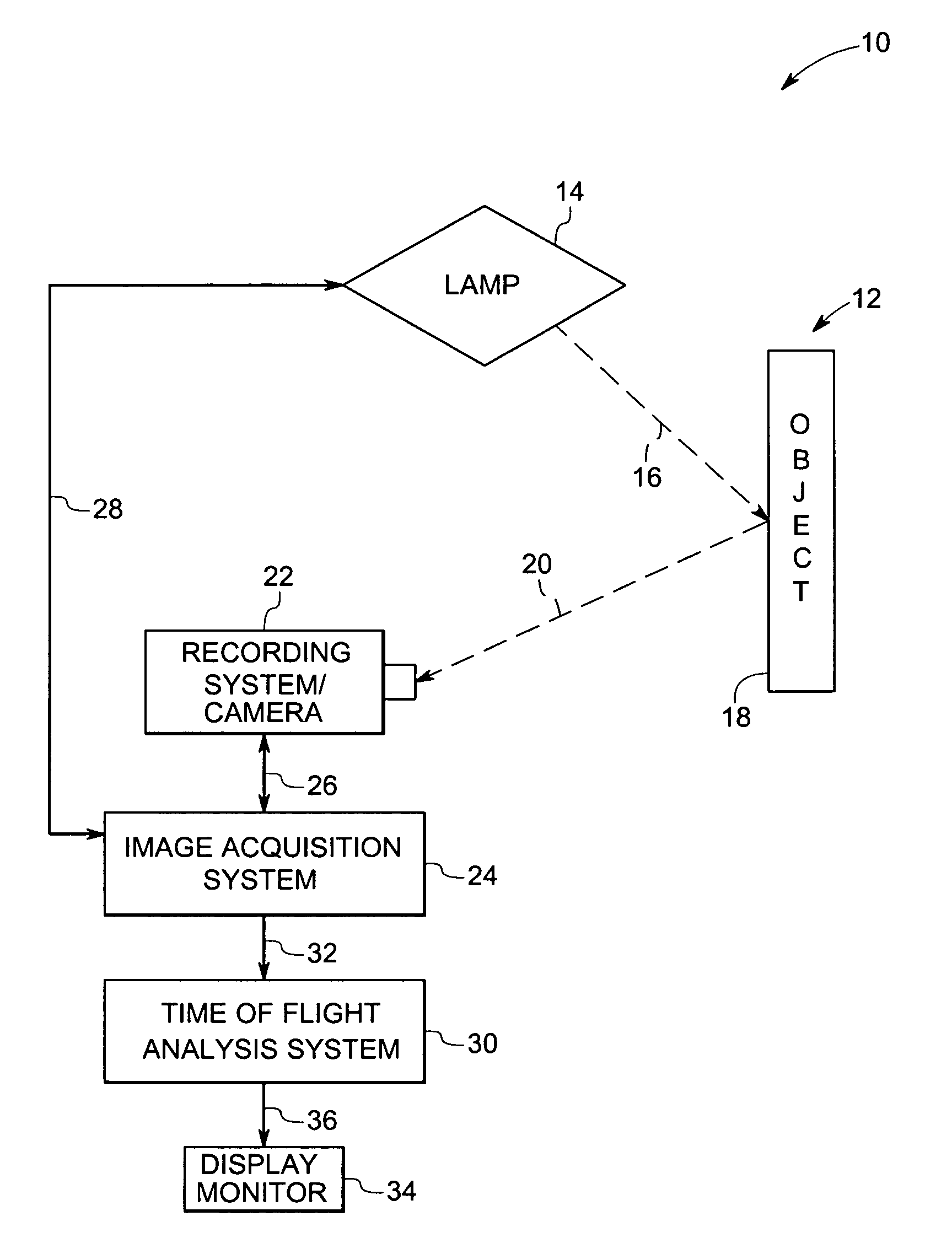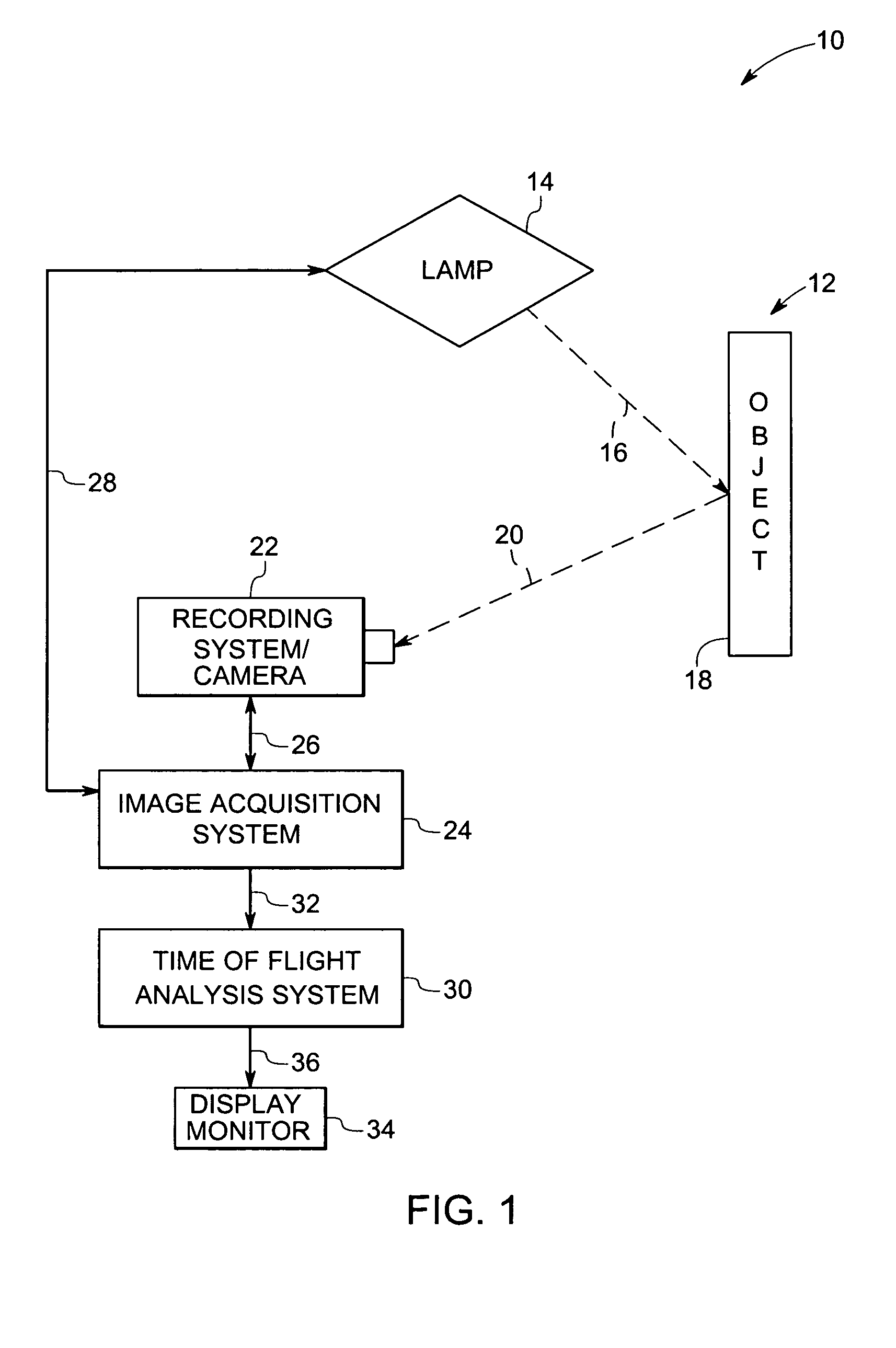Method and apparatus for thermographic nondestructive evaluation of an object
- Summary
- Abstract
- Description
- Claims
- Application Information
AI Technical Summary
Benefits of technology
Problems solved by technology
Method used
Image
Examples
Embodiment Construction
[0016]The different embodiments described herein relate to nondestructive testing methods and system for determining thickness and depth of flaws in an object using high-speed IR transient thermography, particularly using the through-transmission mode and reflection mode imaging techniques.
[0017]FIG. 1 shows a diagrammatic representation of a non-destructive evaluation system 10 for detecting flaws in a part or an object 12. The object 12 may be an industrial part, for example, a blade (turbine blade), a vane made of ceramics, combustion liner, a shroud or a similar part, for example for turbines or aircraft components. The system 10 includes a lamp 14 (for example, a flash lamp) for rapidly applying multiple high power optical pulses 16 on a surface 18 of the object 12. In one example, the lamp 14 is a linear lamp. In an exemplary embodiment, the lamp is configured to be moved for at least one of reflection mode imaging and through-transmission imaging. Two suitable arrangements fo...
PUM
| Property | Measurement | Unit |
|---|---|---|
| thermal camera | aaaaa | aaaaa |
| time of flight analysis | aaaaa | aaaaa |
| time-temperature | aaaaa | aaaaa |
Abstract
Description
Claims
Application Information
 Login to View More
Login to View More - R&D
- Intellectual Property
- Life Sciences
- Materials
- Tech Scout
- Unparalleled Data Quality
- Higher Quality Content
- 60% Fewer Hallucinations
Browse by: Latest US Patents, China's latest patents, Technical Efficacy Thesaurus, Application Domain, Technology Topic, Popular Technical Reports.
© 2025 PatSnap. All rights reserved.Legal|Privacy policy|Modern Slavery Act Transparency Statement|Sitemap|About US| Contact US: help@patsnap.com



